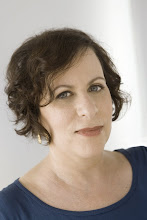Day 3 and PhotoPlus Expo Is Over
This last day began with a panel on White House photographers, moderated by Debra Weiss. It was a fascinating and historicdal look at the position which was originally done my military photographers who kept their distance and pretty much concentrated on official events. JFK was the first president to bring in outside photographers--Jacques Lowe, Stanley Tretick, George Thames (of The New York TImes) and we began to see the first glimpses of the work of the president as well as the president as a person in such photographs as John F. Kennedy Jr. peeking out from the door under his fathers' desk in the Oval Office.
Lyndon Johnson brought the first official White House photographer in--Yoichi Okamoto.
David Hume Kennerly, who photographed Richard Nixon, and especially Gerald Ford (who he became very close to) showed his work, saying he had an "upstairs, downstairs" relationship with them. Like other photographers he had top secret clearance, and showed photographs of President Ford at a planning session for the military response to the Mayaguez incident in 1975 that hasn't been seen before.
His favorite photograph was taken on the final day of Ford's administration when he was with Betty Ford and she got on top of the table in the Cabinet Room and started dancing. She was his favorite.
Robert McNeely worked for presidents Carter and Clinton, and said Carter was uncooperative and as a result there is little historical documentation of his administration. "Carter was just impossible", he said.
As for Clinton, McNeely photographed him during the campaign and went to the White House with him. Wanted full access and to shoot in B&W. Only twice in six years did Clinton ask him to stop taking pictures.
Pete Souza was working for the Chicago Tribune when he met Barack Obama on his first day as a Senator, and took a photograph of him with daughter, Malia. Obama was so impressed he asked for prints, which began their relationship. Souza says he had it in the back of his mind that maybe this guy is worth watching, and he was shooting for history.
Having photographed Ronald Reagan, he was familiar with the job, and says he spends a lot of looking for interesting photographs. Where Reagan was formal (always wore a jacket in the Oval office), Obama is more relaxed. Even with top secret clearance, when he shoots in meetings he has to be careful not to show the writing on the paperwork, and everyone has to look good. This White House puts out lots of photos, from the White House website to their Flickr stream.
Souza told of how they cover a wall in the West Wing with "jumbos", 20 x 30 prints (about 80 of them) that they change out all week for Obama and staff to look at. That's sort of like how a magazine puts an issue up on their walls while they are working on it so they can see it as a whole, make changes, substitute photos, etc.
All of the photographers touched on the propaganda aspect of their work. For McNeely, "What you do is see as propaganda, it’s just a fact of life. What you try to shoot for is history. You have to live with the factor of how those photograph are seen. You’re going to reflect who the man is. You’re not going to change him.”
Pete Souza said this: “It’s a lot closer to photojournalism than what the wire services photographers do—they’re shooting photo ops.”
When asked about wether it is the pinnacle of photojournalism, McNeely said, "It’s an amazing thing while it exists. It’s hard to do anything else in Washington. That access is intoxicating.”
For David Hume Kennerly (a Pulitzer Prize winner for his Vietnam War photographs), “I know what I’m missing when someone else is there.”
Labels: barack obama, david hume kennerly, debra weiss, pete souza, photography, robert mcneely, stella kramer, stellazine, white house photographer











0 Comments:
Post a Comment
Subscribe to Post Comments [Atom]
<< Home